9 Living Room Furniture Layout Ideas
The living room is the heart of the home. It’s where you entertain guests, relax with family, and unwind after a long day. But creating a functional, stylish, and comfortable living room often comes down to one thing: the furniture layout. The right arrangement makes the space flow effortlessly, while a poor layout can leave your living room feeling cluttered or uncomfortable.
If you’re looking for fresh inspiration, here are nine living room furniture layout ideas to help you design a space that fits your lifestyle and aesthetic.
1. Classic Symmetrical Arrangement
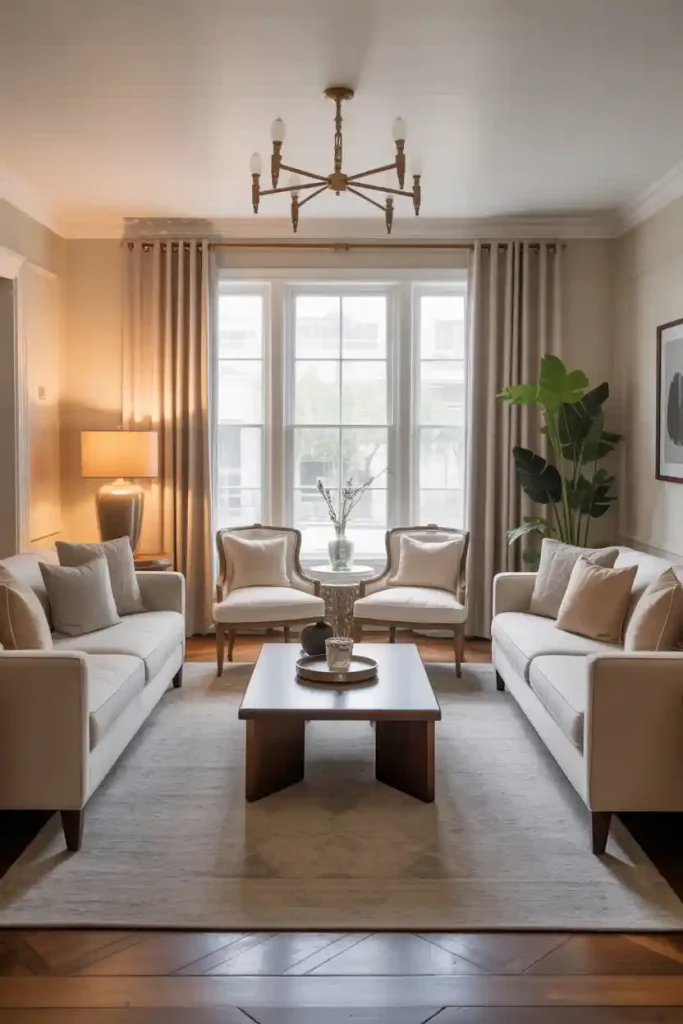
A timeless option is the symmetrical layout. Place two sofas facing each other with a coffee table in the center. If you prefer, swap one sofa for two matching armchairs. This design creates a balanced, formal look perfect for conversation and entertaining.
This style works especially well in rectangular rooms, as it highlights order and proportion. To prevent the space from feeling too stiff, add cozy layers with throw blankets, textured rugs, and statement lighting.
👉 For inspiration on finishing touches, check out our guide on choosing the perfect rug for your living room.
2. Open-Concept Flow
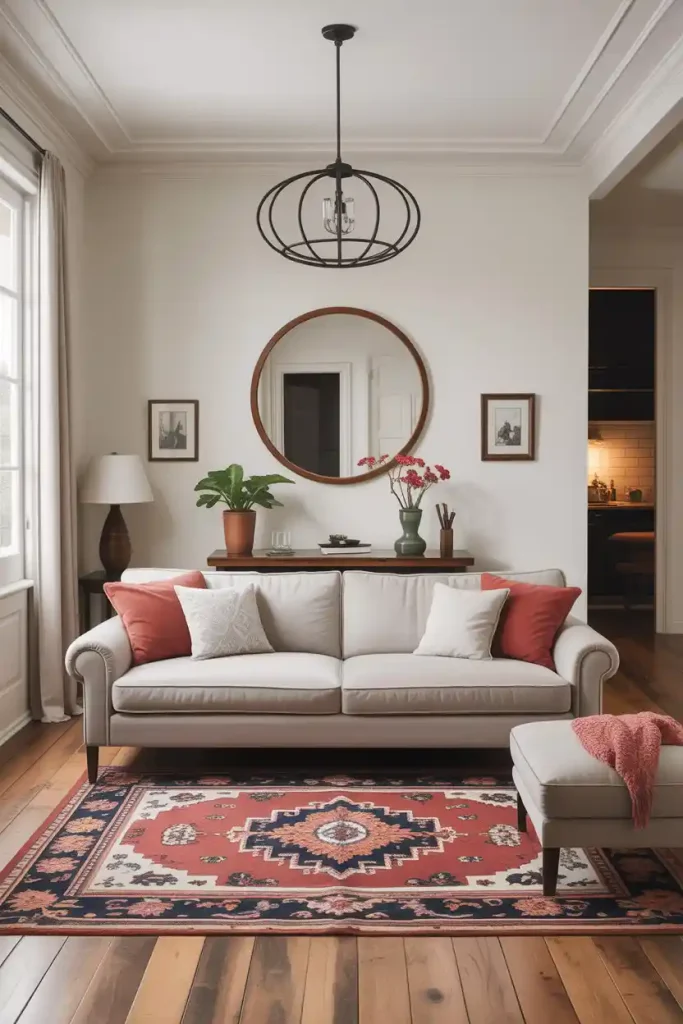
If your home has an open-plan design, your living room should flow naturally into other spaces like the dining or kitchen area. In this case, float your sofa away from the walls and use it as a subtle divider. A console table behind the sofa adds storage while reinforcing the “boundary” of the room.
Accent chairs and ottomans can help define zones without interrupting the airy feel. Area rugs are also key in open-concept layouts to visually anchor the living space.
3. The L-Shaped Layout
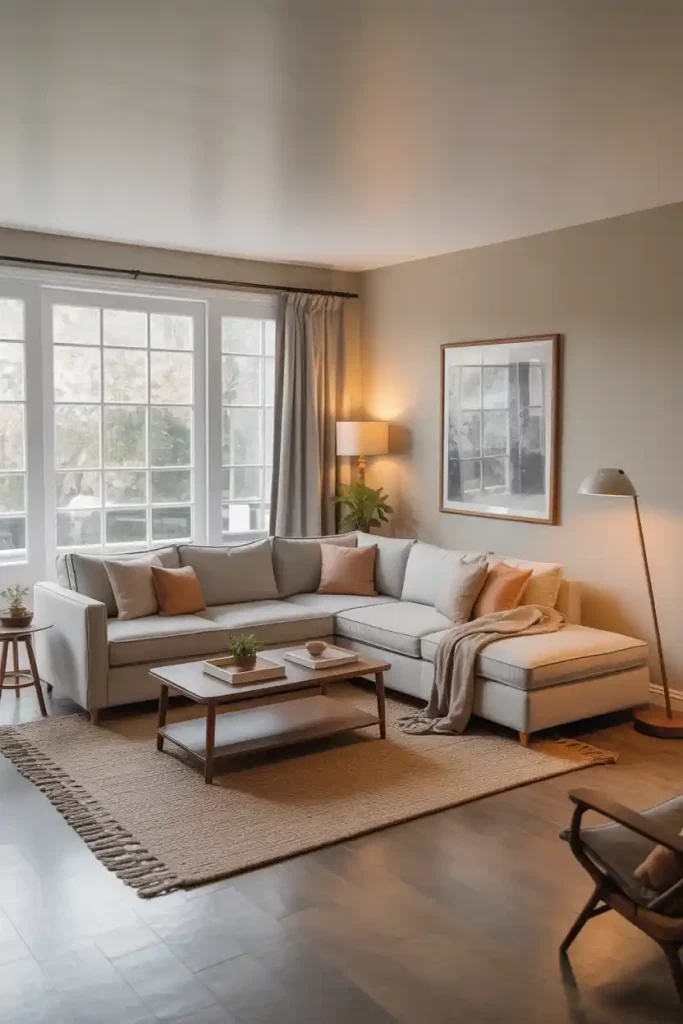
An L-shaped furniture arrangement is one of the most versatile and practical designs. Position a sectional or sofa with a chaise in the corner of the room to maximize seating while leaving open space for walking paths.
This setup feels casual yet inviting, making it ideal for family movie nights. To balance the arrangement, place a coffee table in front and consider a floor lamp or side table for added functionality.
👉 Want to create a cozy vibe? Explore our tips for designing a warm and inviting living room.
4. Centered Around a Fireplace
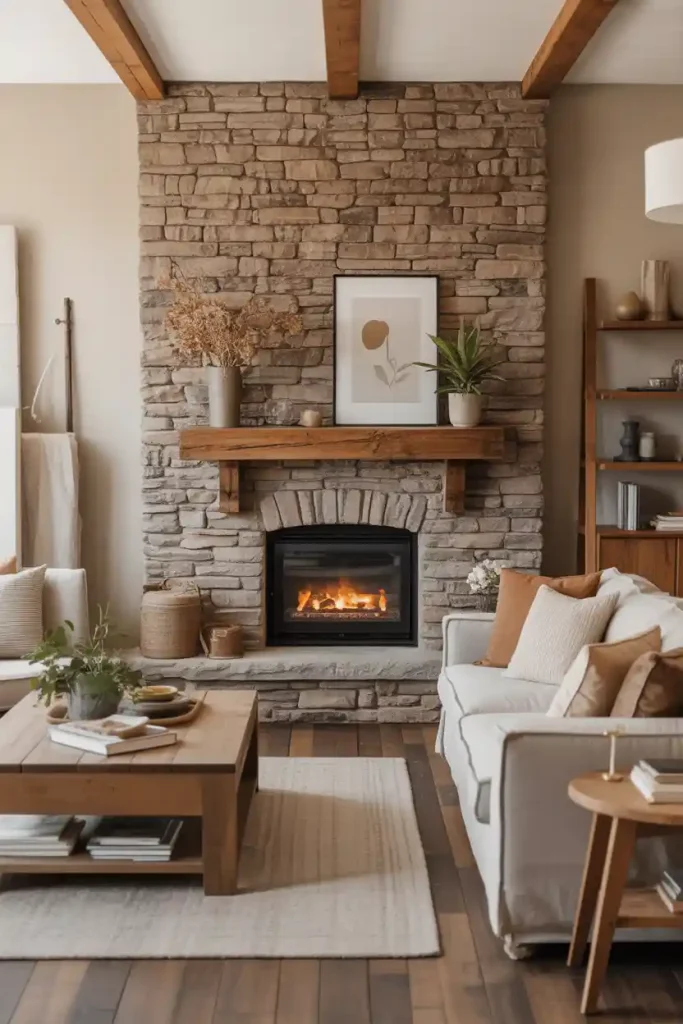
If your living room features a fireplace, let it take center stage. Position your sofa directly across from the fireplace, with armchairs angled slightly on either side to create a welcoming nook.
Adding a mantel mirror or artwork above the fireplace draws the eye upward and enhances the focal point. Just be sure to keep furniture close enough to foster conversation while still maintaining a comfortable distance from the fire.
5. Furniture Around the TV
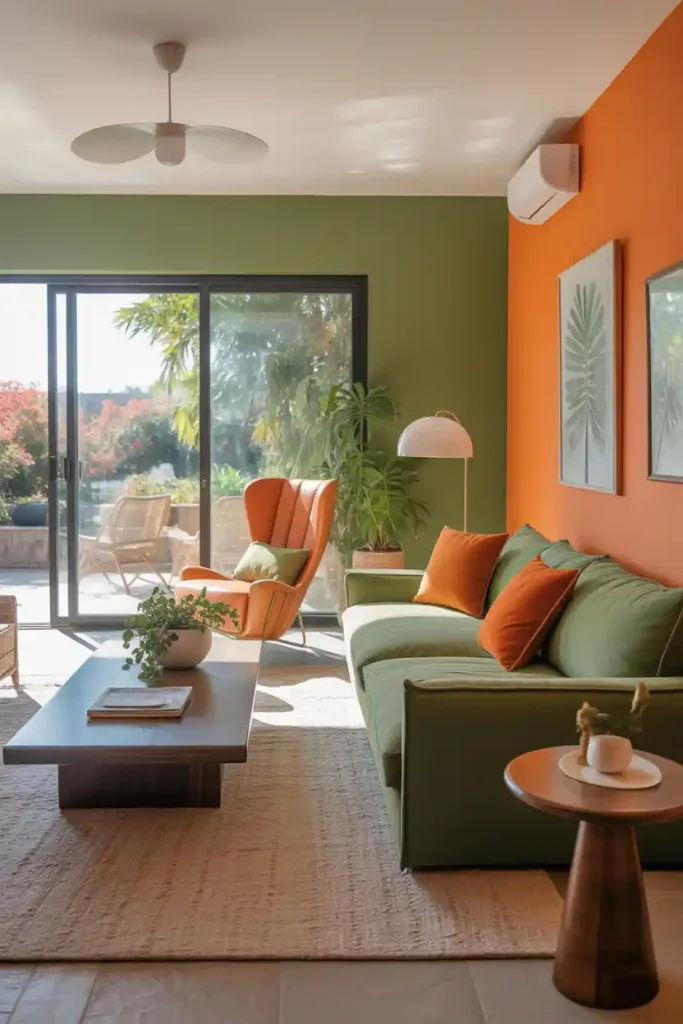
For many households, the television is the focal point of the living room. In this case, arrange your sofa directly facing the TV, with additional seating like recliners or armchairs positioned at slight angles.
Avoid pushing everything against the walls; instead, bring pieces inward to create a cozy zone. A media console or floating shelves beneath the TV not only provide storage but also balance the layout visually.
👉 To elevate the look, see our post on stylish storage ideas for small living rooms.
6. Conversational Grouping
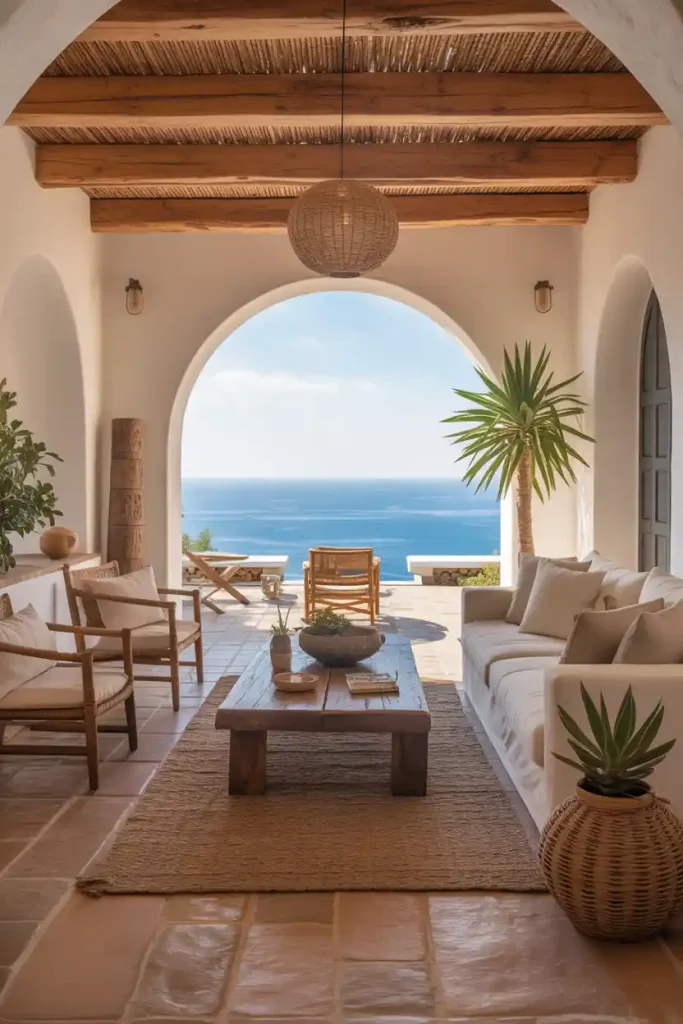
Not every living room has to revolve around a TV or fireplace. A conversational grouping layout brings focus back to people. Place sofas and chairs in a circular or semi-circular arrangement around a central coffee table.
This setup is perfect for hosting guests, playing games, or enjoying long chats over coffee. A round area rug complements the grouping and enhances the sense of intimacy.
7. Floating Furniture Layout
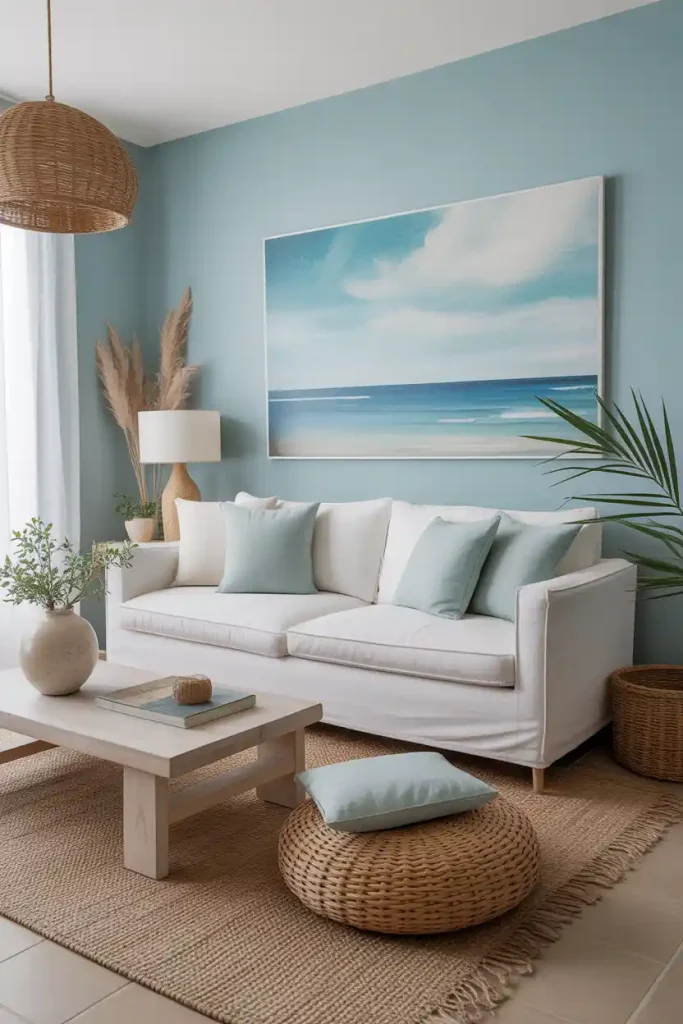
Pushing all furniture against the walls often makes a room feel empty. Instead, try “floating” your seating arrangement toward the center of the room. This technique works especially well in large or open living rooms, where you can create a cozy zone with sofas, chairs, and a rug defining the perimeter.
Floating layouts make the space feel more dynamic while leaving room behind for shelves, consoles, or decorative elements.
👉 Learn more about how to style console tables to complement your furniture.
8. The Minimalist Layout
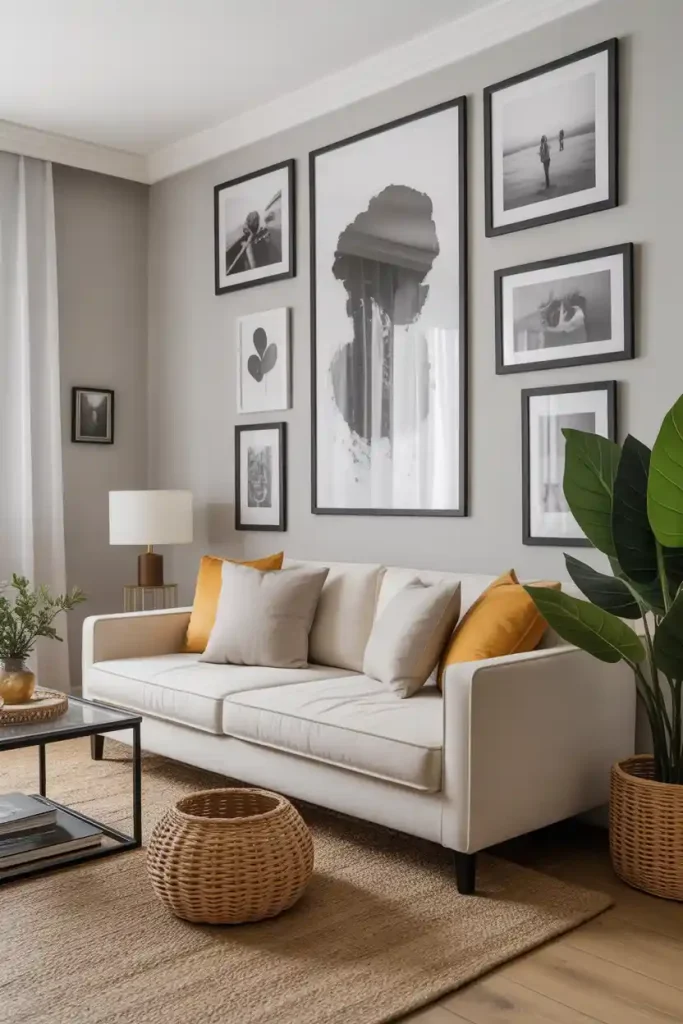
If you prefer a clean and uncluttered look, the minimalist layout may be your best bet. Stick to essential pieces—a sofa, a coffee table, and one or two chairs. Keep lines sleek and the color palette simple.
This arrangement works well in smaller living rooms, where less furniture means more open space. To add character, incorporate a statement piece, like a sculptural chair or a textured rug, that stands out without overwhelming the room.
9. Multipurpose Living Room Layout
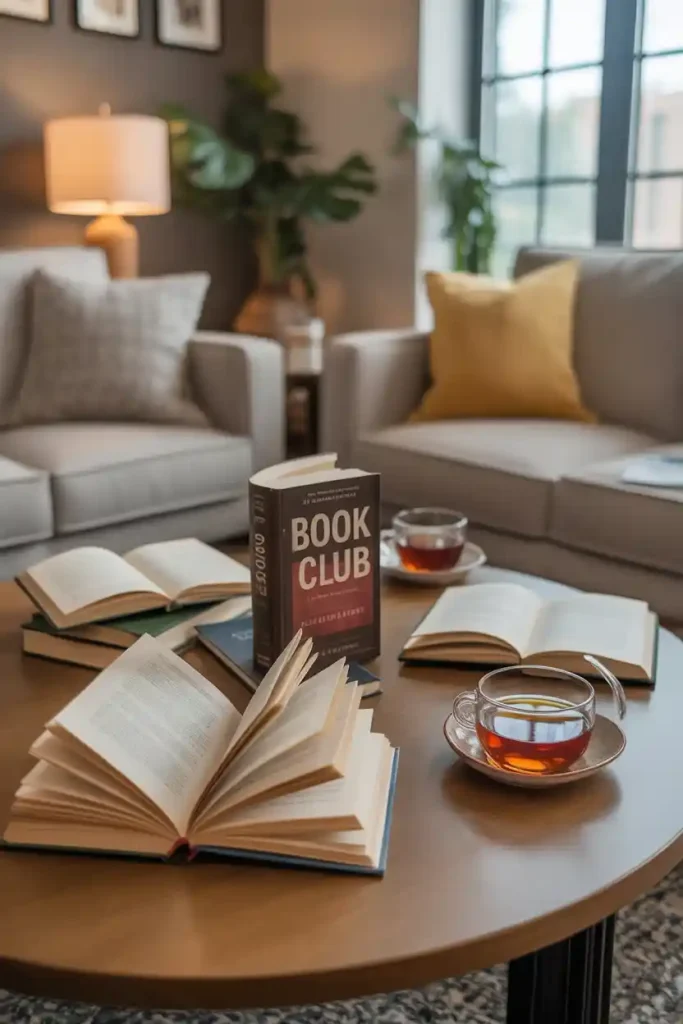
In today’s homes, the living room often serves multiple functions—office, playroom, or even workout space. A multipurpose layout allows you to carve out zones for different activities without compromising style.
For example, position a sofa and chairs near the TV, place a small desk in a corner for work, and use baskets or shelves for toy storage. Modular furniture, like ottomans or nesting tables, makes it easy to adapt the room to your needs.
👉 For additional storage inspiration, read our article on creative shelving ideas for every room.
Tips for Choosing the Right Layout
Now that you’ve seen several ideas, here are a few extra tips to help you decide which living room furniture layout is best for you:
- Consider traffic flow: Leave clear pathways so people can move around comfortably.
- Scale furniture to the room: Oversized sofas can overwhelm small spaces, while tiny pieces may feel lost in large rooms.
- Balance function and style: A layout should reflect how you use the room daily, not just how it looks in photos.
- Layer with décor: Rugs, lighting, and accent tables tie layouts together and enhance comfort.
Final Thoughts
Your living room is one of the most versatile spaces in your home, and its layout plays a crucial role in both comfort and style. Whether you prefer a classic symmetrical arrangement, a cozy L-shaped design, or a flexible multipurpose setup, the key is choosing a layout that fits your lifestyle.
Experiment with different arrangements until you find one that feels just right. After all, a well-designed living room isn’t just beautiful—it’s also a reflection of how you live, connect, and relax.






